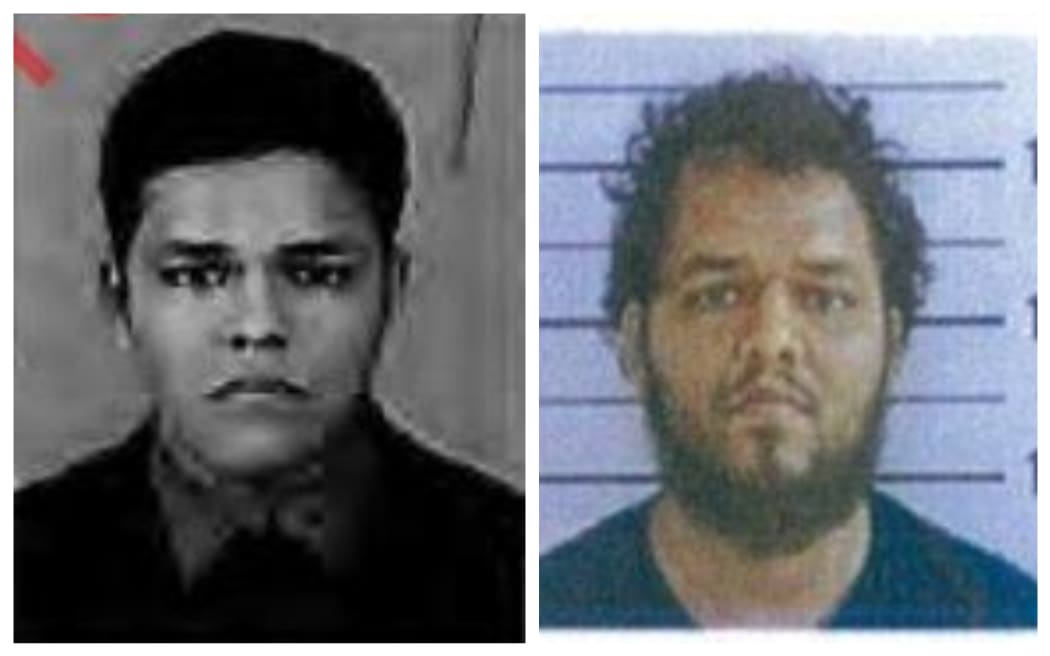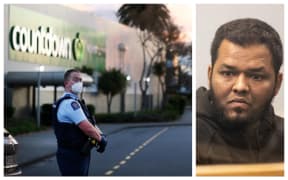
Ahamed Samsudeen was shot dead by police in 2021 after stabbing multiple people at a West Auckland supermarket. Photo: Supplied
Authorities' designating the LynnMall attacker as a person of national security interest meant "the die had been cast on his future", a coroner has heard.
The Federation of Islamic Associations of New Zealand was the last group to make its submissions on Wednesday as part of a three-day hearing in Auckland over the death of Ahamed Samsudeen.
The hearing, in front of Coroner Marcus Elliott, was intended to set the scope of the coronial investigation into Samsudeen's death.
Samsudeen was shot dead by police in 2021 after seriously injuring five people in a stabbing at the LynnMall Countdown in West Auckland.
He had been under active surveillance after being released from prison, on charges of possessing Isis propaganda, just months before.
The coroner heard Samsudeen had been designated as a person of national security interest in 2016 - five years before his death.
The next year, he was stopped at Auckland International Airport. Authorities believed he was on his way to Syria to join Isis.
Samsudeen spent most of the next four years in prison on remand.
The 2016 designation "inevitably determined all future responses by New Zealand authorities", Federation of Islamic Associations of New Zealand chairperson Abdul Razzaq told the hearing on Wednesday.
"Once that label had been placed on Samsudeen by the [Security Intelligence Service], and later by the police, and then as an extremist by Corrections, the die had been cast on his future."
Razzaq argued that designating Samsudeen as a security threat impacted how police treated him in the following five years.
"That label would go onto impact every aspect of his life from that moment forward," he said.
"From the failure to recognise and treat his obvious mental health issues... from the spectre of constant surveillance... to the decision to use lethal force rather than alternatives which would finally take his life."
Razzaq did not dispute that Samsudeen was deserving of the label, but said it was important for the coroner to consider the context in which it was given.
"This was a time when the prime minister, John Key, was inundating the political landscape with a barrage of media stories about jihadi brides and foreign fighters from New Zealand," he said.
"It was within this context that the SIS and police designated Samsudeen as a person of national security interest."
He said both agencies had a high standard of professionalism and had a right to designate Samsudeen as a security risk. "After all, this person did carry out a violent attack," he said.
"What we're seeking is clarification on how and why this designation was made at the exclusion of his mental illness. It's a question of balance."
Samsudeen was known to suffer from mental health issues, including post-traumatic stress disorder and depression.
Crown lawyer Kim Laurenson, representing the police, the SIS, and the Department of Corrections, disputed Razzaq's point.
"It is in my view very difficult to draw a connection between identifying someone as a person of interest in 2016 and their ultimate death five years later," Laurenson said.
"There were a number of points along the way where, regardless of the fact he was regarded as a person of interest, if he desisted in his behaviour he would have been treated differently."
Razzaq also urged Coroner Elliott to investigate officers' use of lethal force instead of tasers.
He pointed to a police report evaluating the effectiveness of tasers when they were first introduced.
"The police report found that tasers were effective in de-escalating 86 percent of incidents, and the presentation of a taser alone was sufficient to resolve 71 percent of the incidents without the use of additional tactics," he said.
"One of the main benefits identified by officers was that it relieved the need to solely rely on firearms, they said it filled the gap between [pepper] spray and firearms."
Razzaq said he wanted to know why the officers who shot Samsudeen had guns on their person, but not tasers.
Todd Simmonds, the lawyer representing the four officers who were on the scene during the attack, said it would not have been viable.
"Unlike the Glocks and unlike pepper spray, a taser is a different beast," he said.
"It's a much bigger weapon, so that feeds into why they were not equipped with a taser on their person in the context of that deployment, that's to ensure their cover is not blown."
Simmonds said tasers were often attached to the front of a vest.
"It's very obvious. You can't hide a taser."
During a summary of the hearing, coroner's counsel Anna Adams noted that the inquiry was likely to require an inquest with expert witnesses.
"Over the course of these three days, a consensus has emerged that an inquest is likely to be helpful," she said.
"If the various further issues need to be investigated, it will inevitably require an inquest."
Coroner Elliott said he intended to deliver his decision on whether an inquest was necessary before the end of April.





